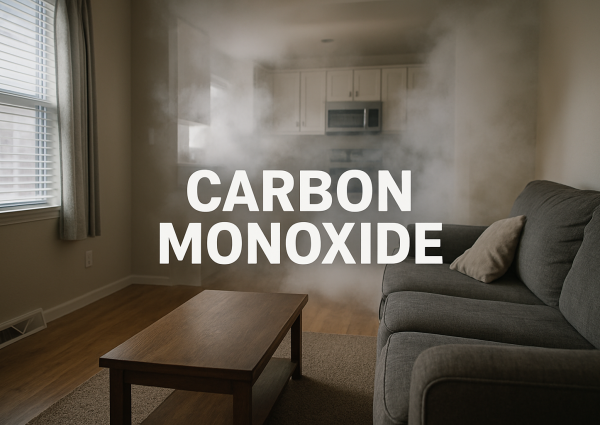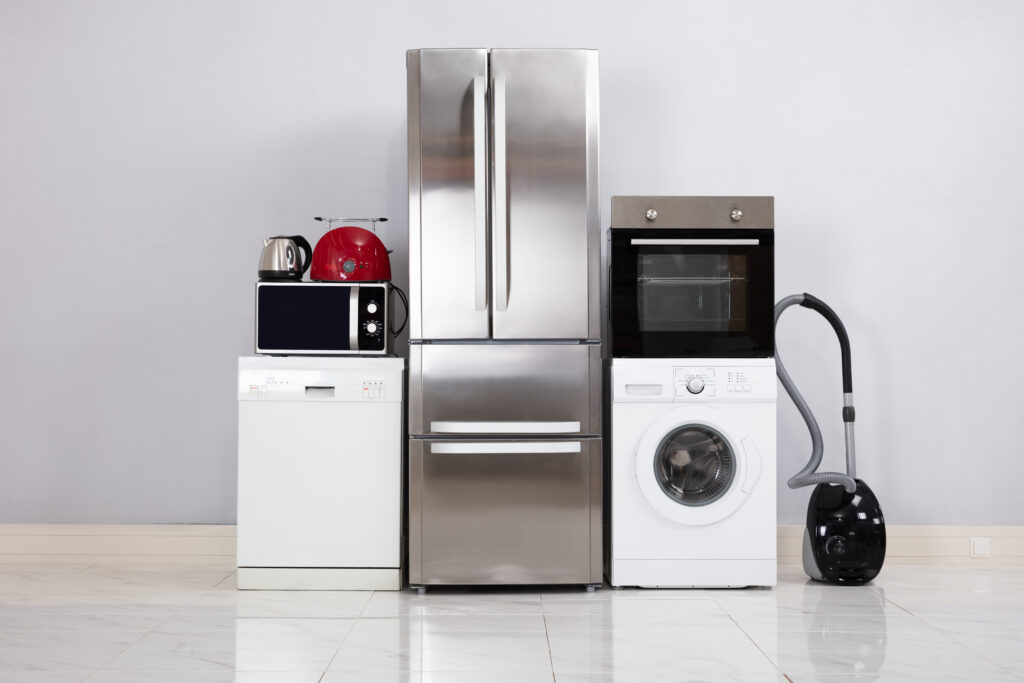Carbon Monoxide
Key Concerns
Carbon monoxide (CO) is a colorless, odorless, and tasteless gas that poses a serious risk in homes, especially for older adults who may not notice early symptoms. It is produced by fuel-burning appliances such as gas stoves, heaters, furnaces, fireplaces, and even cars left running in attached garages. In older adults, CO exposure is particularly dangerous due to age-related vulnerabilities such as weaker cardiovascular systems, existing respiratory conditions, and diminished sensory awareness. Low-level, long-term exposure can cause reversible neurological effects like headaches, memory problems, and difficulty concentrating. However, prolonged or high-level exposure may lead to nonreversible brain damage, including cognitive decline, motor impairment, or Parkinson-like symptoms. CO exposure also increases the risk of angina (chest pain) by limiting oxygen delivery to the heart, especially in individuals with pre-existing heart disease. Because CO symptoms often mimic fatigue, flu, or confusion especially in older people it can go undetected until it’s too late. Prevention through working CO detectors, regular inspection of appliances, and proper ventilation is critical to reducing this silent threat.

Sources

Household appliances and Others
Many common household appliances can become hidden sources of carbon monoxide, particularly those that burn fuel such as natural gas, wood, coal, oil, or propane. These include gas space heaters, furnaces, water heaters, wood stoves, fireplaces, and even leaking chimneys. When these appliances function correctly, they burn fuel cleanly and vent harmful gases like CO safely outside. However, problems arise when the combustion is incomplete due to poor maintenance, blocked vents, cracks in the heat exchanger, or aging equipment. This leads to the buildup of carbon monoxide indoors, which is both colorless and odorless, making it hard to detect without a CO alarm. For instance, a gas furnace with a cracked flue can slowly leak CO into the home each time it runs, while a fireplace with a blocked chimney can cause CO to backdraft into the living area. Older adults are especially at risk because symptoms like light-headedness, nausea, or confusion may be mistaken for normal aging or fatigue.
Another serious and often overlooked source of carbon monoxide is a running car in an attached garage. Even if the garage door is open, CO can quickly seep into the home through cracks, doors, or ventilation systems. Just a few minutes of engine idling can result in CO levels high enough to cause loss of consciousness or even death, especially during colder months when people warm up their vehicles indoors. Never leave a vehicle running in the garage, even briefly it can be fatal to residents in the home.
How to Limit & Avoid Risks Associated with Carbon Monoxide
- Turn off gas appliances as soon as you are done using them. Leaving them on too long can release harmful gases into your home.
- The longer an appliance runs, the more carbon monoxide it may release, especially if it’s not working properly or is poorly ventilated.
- Appliances like gas stoves, water heaters, fireplaces, space heaters, and furnaces can all be sources of carbon monoxide if they burn fuel.
- Avoid running fuel-burning appliances in closed rooms or for long periods without checking that there’s proper airflow or ventilation.
- Always follow manufacturer instructions for use and schedule routine maintenance checks just like a car, appliances need attention to work safely.
- If you ever feel dizzy, lightheaded, sick to your stomach, or confused while using these appliances, stop using them right away and get fresh air.
- Call a doctor or healthcare provider immediately if symptoms continue it could be a sign of carbon monoxide poisoning.
- Install carbon monoxide (CO) detectors in your home. These devices will alert you if dangerous levels of carbon monoxide are present.
- Place a detector on every floor of your home especially near bedrooms, in hallways, and next to rooms with fuel-burning appliances.
- Ask a family member or professional to help you install them if needed installation is usually simple, but it’s important they’re put in the right places.
- Replace your detectors every five years or as instructed on the package, even if they still appear to be working.
- Make sure your detectors are certified and from a trusted brand. Avoid buying ones with no safety labels or unclear instructions.
- Test the detector every month by pressing the button on it. If it doesn’t beep, the batteries may be dead replace them right away.
- Carbon monoxide is silent, invisible, and has no smell the detector is your only warning, so treat it like a smoke alarm for gas.
- Keep a written note or sticker near your phone with the Poison Control number: 1-800-222-1222 in case of emergency.
Frequently Asked Questions
1. What is carbon monoxide and why is it dangerous?
Carbon monoxide (CO) is a gas that you cannot see, smell, or taste. It is produced when fuel-burning appliances like stoves, fireplaces, or heaters do not burn fuel completely. Breathing in CO can make you feel sick and, in high amounts, it can be deadly.
2. What are the symptoms of carbon monoxide poisoning?
The symptoms may feel like the flu without the fever. They include headache, dizziness, weakness, nausea, confusion, chest pain, and trouble breathing. Older adults may also feel tired or forgetful and may not realize the cause is gas exposure.
3. What appliances in my home can cause carbon monoxide buildup?
Any appliance that burns fuel can produce CO. This includes gas stoves, water heaters, furnaces, fireplaces, wood stoves, space heaters, and even vehicles left running in attached garages.
4. How can carbon monoxide affect my health as an older adult?
Older adults are more sensitive to CO because the body doesn’t process low oxygen levels as well with age. It can cause chest pain (especially for those with heart problems), worsen breathing conditions, and lead to memory loss or confusion. In some cases, it can cause long-term brain damage.
5. What should I do if I think there’s carbon monoxide in my home?
Leave the house immediately and go outside for fresh air. Do not wait or try to find the source. Call 911 or the Poison Control Center at 1-800-222-1222. Do not go back inside until professionals say it’s safe.
6. How do I prevent carbon monoxide poisoning in my home?
Make sure fuel-burning appliances are properly installed and maintained. Never use a gas stove to heat your home. Keep garage doors open if a car is running. Always make sure there is proper ventilation when using fireplaces or space heaters.
7. Do I really need a carbon monoxide detector?
Yes. A CO detector is the only way to know if this dangerous gas is in your home. It will sound an alarm before CO reaches harmful levels, giving you time to leave safely.
8. Where should I install carbon monoxide detectors?
Place detectors on each level of your home especially near bedrooms, in hallways, and near any fuel-burning appliances. If possible, have a family member or professional help you install and test them.
9. How often should I check or replace my carbon monoxide detectors?
Test your detectors once a month using the test button. Replace the batteries once a year (or when the device starts chirping), and replace the detector itself every 5 years or as recommended on the label.
References & Helpful Articles
- https://www.epa.gov/indoor-air-quality-iaq/carbon-monoxides-impact-indoor-air-quality
- https://www.epa.gov/co-pollution/basic-information-about-carbon-monoxide-co-outdoor-air-pollution
- https://www.epa.gov/indoor-air-quality-iaq/what-about-carbon-monoxide-detectors
- https://www.angi.com/articles/how-to-check-gases-your-house.htm
- https://www.hud.gov/program_offices/healthy_homes/healthyhomes/carbonmonoxide
- https://www.cdc.gov/carbon-monoxide/about/index.html
- https://www.cdc.gov/niosh/topics/co-comp/default.html
- https://www.ncdhhs.gov/carbon-monoxide-poisoning
- https://epi.dph.ncdhhs.gov/oee/a_z/co.html
- https://nchh.org/information-and-evidence/learn-about-healthy-housing/health-hazards-prevention-and-solutions/carbon-monoxide/#:~:text=Health%20Impacts&text=Even%20at%20low%20levels%2C%20carbon,it%20difficult%20to%20think%20clearly
- https://www.epa.gov/indoor-air-quality-iaq/where-should-i-place-carbon-monoxide-detector
- https://www.epa.gov/indoor-air-quality-iaq/what-do-i-do-if-i-suspect-combustion-appliances-are-affecting-my-health